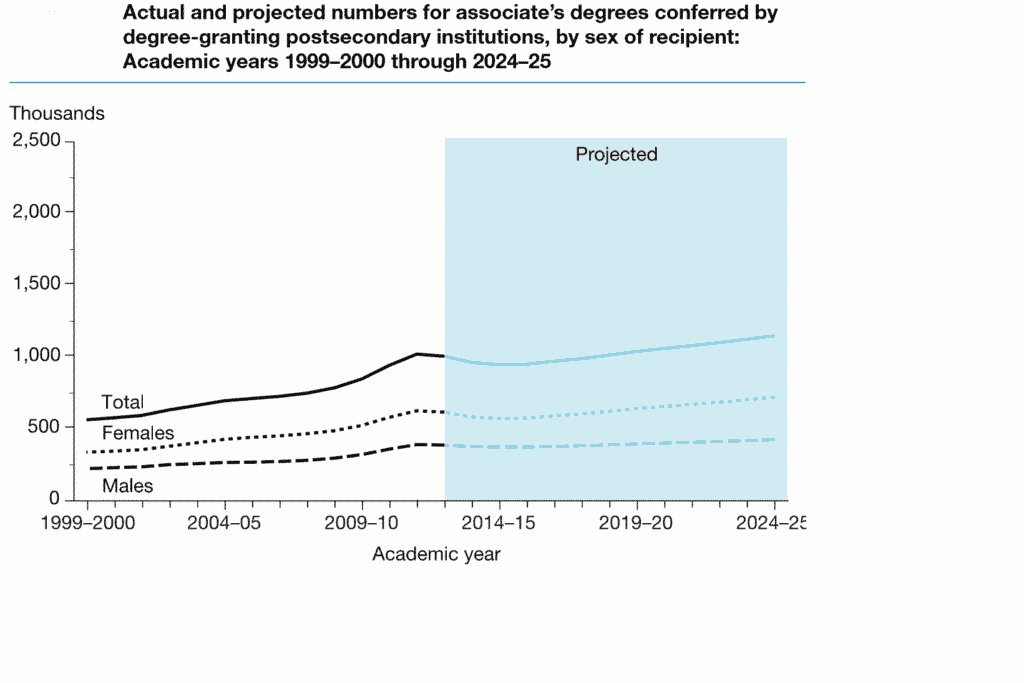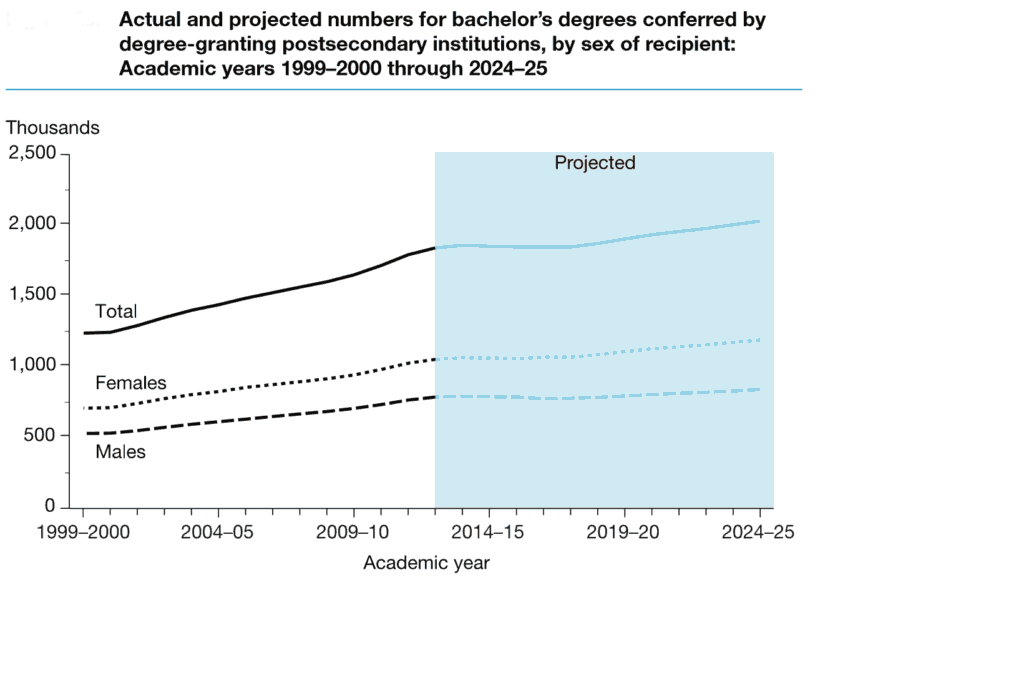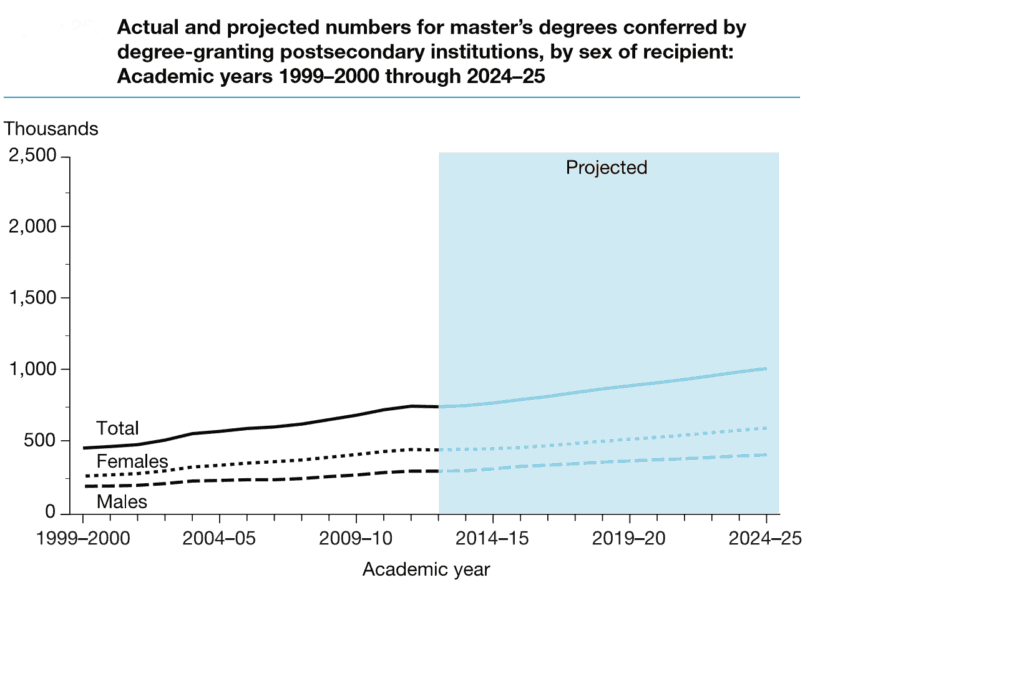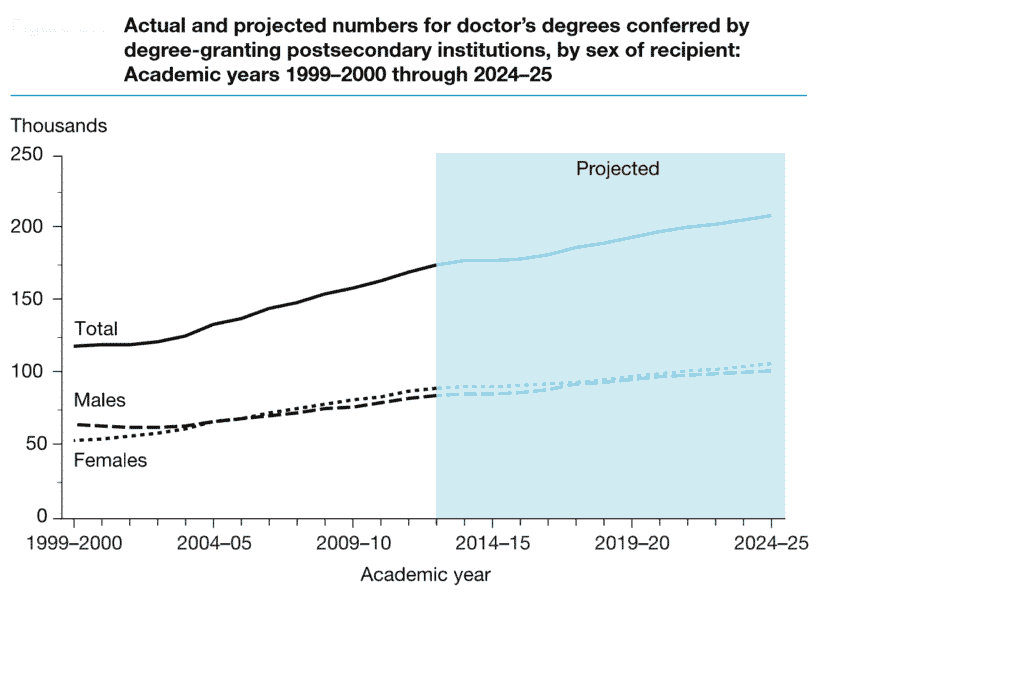
College Degree Trends in the U.S.
According to the U.S. Department of Educations recent NCES report on education statistics, there are a significant number of important trends with respect to higher education degrees.
First we will define postsecondary education to get a working baseline of the institutions we are talking about. Postsecondary education includes academic institutions, career schools, technical schools, and continuing professional education programs after high school. American universities and colleges, along with career colleges and technical colleges, offer a vast array of postsecondary opportunities. Regardless of the college or university, the following dataset represents trends in college degrees you need to know about. As such, we have compiled the most important information into a compact report for ease of use.
College Degree Basics
Americans are completing more years of education than ever before. For example, the percentage of 25- to 29-year-olds who had completed high school rose from 86% in 2005 to 91% in 2015; likewise, this same group who earned a bachelors degree swelled from 29% to 35% during this same timeframe. Additionally, from 200-2010, enrollment in 4-year and 2-year colleges rose an astounding 37% to 21 million from 15 million.
College Degree Growth
Here is a quick hit of growth in college degrees conferred for the most recent reporting period (2004-2014) the U.S. Department of Education.
- Associated degrees conferred increase 51%
- Bachelor degrees conferred increased 34%
- Master degrees conferred increased 34%
- Doctor degrees conferred increased 41%
For more information about data on college degrees, visit our portal to find the Most Popular College Degrees in the United States. A list of the 200 most popular college degrees will help students grapple with majors, schools, careers, and educational opportunities that existing in each domain.
High Growth Degree Tracks
Below is a brief list of high growth degree programs in the U.S. from 2009-2014 culled from the NCES latest report.
- Computer Science and Information Science grew 46%
- Engineering fields accelerated 29%
- Agriculture and Natural Resources tracks grew 41%
- Health Professions and Nursing spiked a whopping 65%
- Public Administration & Social Services jumped 40%
- Homeland Security, Law Enforcement, Firefighting up 49%
- Parks & Recreation, Leisure, Fitness up 45%
- Math and Statistics accelerated by 35%
Associate Degree Growth
Actual and projected growth of associate degrees conferred in the U.S.
Total: actual growth of 78% from 2000-2013 with a projected 14% trajectory through 2024
Male: a 73% increase from 2000 to 2013 with a projected growth of 10% through 2024
Female: an 82% spike from 2000-2013 with a future growth trend of 17% through 2024.
Bachelor Degree Growth
Master Degree Growth
Actual and projected growth of masters degrees conferred in the U.S.
Total: actual growth of 62% from 2000-2013 with a projected 36% trajectory through 2024
Male: a 54% increase from 2000 to 2013 with a projected growth of 38% through 2024
Female: an 69% spike from 2000-2013 with a future growth trend of 34% through 2024.
Doctor Degree Growth
Actual and projected growth of doctors degrees conferred in the U.S.
Total: actual growth of 47% from 2000-2013 with a projected 19% trajectory through 2024
Male: a 31% increase from 2000 to 2013 with a projected growth of 20% through 2024
Female: an 67% spike from 2000-2013 with a future growth trend of 18% through 2024.
For additional resources, make sure to visit MatchCollege and subscribe to our blog for the latest in college information.



